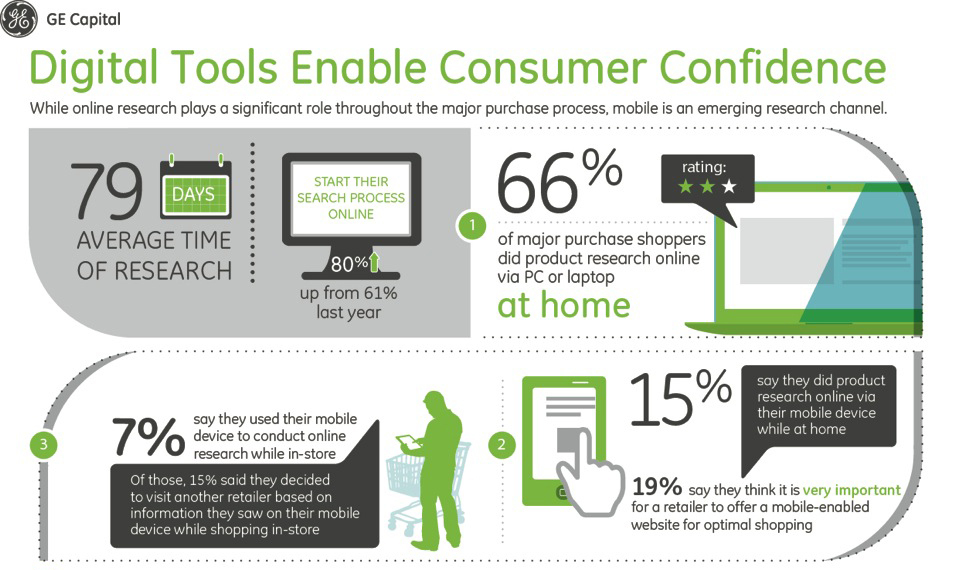5 Ways to Fail at Inbound Marketing

Although inbound Marketing is getting a lot of press these days, for many marketers it is still a new concept. It is a concept that is often misunderstood by those who grew up in the days of heavy advertising and interruption based outbound marketing. I will be the first to admit that Inbound marketing is not the white horse that runs in and saves the day for the marketing challenges we face as practitioners. However it is a very important tool in today's world and is reflective of the changes we have witnessed in consumer (B2C) and customer (B2B) behavior over the past 10 years. The individuals and organizations we want to sell to today are more informed about the products and services they are considering than ever before. Consider there are more than 3.5 billion Google searches performed each day and a recent study published by GE Capital Retail Bank indicated that 81% of people search for product information online for an average of 79 days prior to purchasing a product.
Given these statistics, marketers must ask themselves what plans they have in place to engage the 99% of prospective customers who are in “research mode”. You want these prospects to recognize your organization as "The" source for information and as a leader in your respective industry or category. The ultimate goal of these pre-sales interactions, or nurturing activities are for leads to engage and to convert when the opportunity is presented to close a new deal or extend an existing relationship over-time.
If you intend to, currently are, or have previously been engaged in inbound marketing as a component of your marketing strategy, make sure that you side-step the 5 ways to Fail at Inbound Marketing.
1. Don’t Define Goals - Sometimes marketers get so caught up in the tactical elements of planning and campaign management that they forget to set goals and to put sufficient systems in place to measure against them. For some marketing tactics this may be cost prohibitive but with Inbound Marketing it is a core principle. I would argue that if you are not measuring it, how can you be certain that the tactic is effective and deserves on going funding? Before engaging in inbound, set SMART marketing goals that are centered on delivering your business objectives. Although you must set goals relevant to your business objectives, common goals that many inbound marketers measure against include: site traffic, leads, blog subscribers, customer conversions, sales growth, email and social engagement.
2. Don’t Develop a Target Persona – Executing any marketing initiative without clarity about the target will never achieve maximum impact. Developing a persona for your inbound strategies is not just a suggestion, it's a requirement. As your inbound efforts expand to include others on your team or with your marketing agency, it's critical that they understand the target's needs, buying cycle's, and challenges to ensure your efforts resonate with the intended audience. Not having a defined persona often times leads to lack of focus, inconsistent messaging, and ultimately limited results.
3. Ignore the Analytics - Inbound marketing is very dynamic by nature and the beautiful thing is that when inbound marketing is executed, using inbound marketing software such as HubSpot, marketers have the ability to quickly understand the results of their effort and make changes to those elements which are not hitting the mark. Understanding the KPI’s or Key Performance Indicators for your Inbound Marketing strategy to be successful is critical. It is also critical that transparency exists with key stakeholders as they will have more insight into the inbound marketing channel than any other independent channel. Additionally, because inbound can be the hub of your marketing efforts, when executed in an integrated fashion, you will find that the other channels will flow into a consolidated analytics view.
4. Sell Instead of Inform – Selling is for the sales team and they typically do it quite well when armed with informed leads who are ready to purchase. That's where you come in! Warm up the leads and ensure they are marketing qualified. During all of the buying cycle phases prior to the selling phase, the prospect is looking for information to validate their assumptions about a product or service. It’s your job to understand their needs and quench their thirst for information in an effort to gain their trust as knowledge experts. Ask yourself the question, "Once I know the best heart surgeon in town, would I go to the other guy in town to have my heart surgery once I’ve already got confirmation as to who the expert is? Most likely the answer for you and your prospect is "No". Remember, let the sales team sell and focus your marketing teams efforts on listening to understand and inform based on what you have learned.
5. Take a Short Term View – Statistics, along with marketers all over the world have confirmed that inbound marketing works - no doubt about it. It has been verified that in most cases it takes considerable time and effort to build a sustainable inbound marketing foundation that yields results. Assuming quick magic will lead to frustration and will put you into tactical mode, which directly conflicts with the methodology surrounding inbound marketing. Once the inbound engine is running, results will abound. Be sure to keep a close eye on what is working the best so that you can replicate it with your audience to be the most effective.
So what? Inbound marketing can be, and in some cases should be the cornerstone of your marketing efforts. The interactions and content that is developed on the back of inbound marketing can be leveraged for years and integrated across all communication channels. If you do engage in inbound marketing strategies, be sure to take the time to plan, understand your audience, be a valuable and relevant resource, while adapting to their needs as they change.


